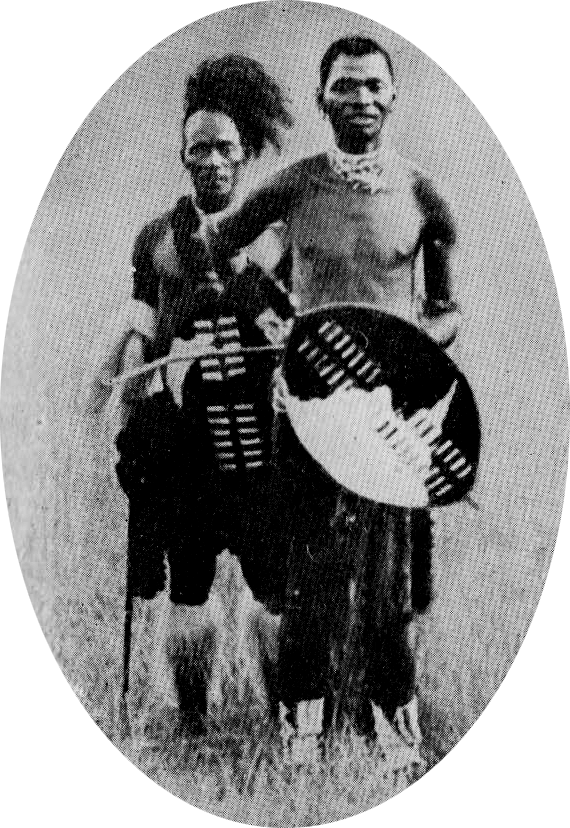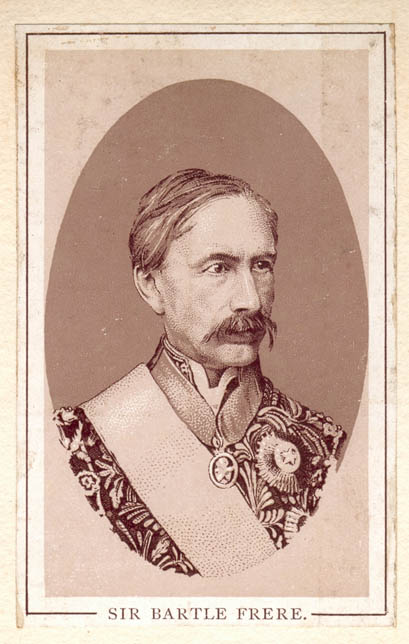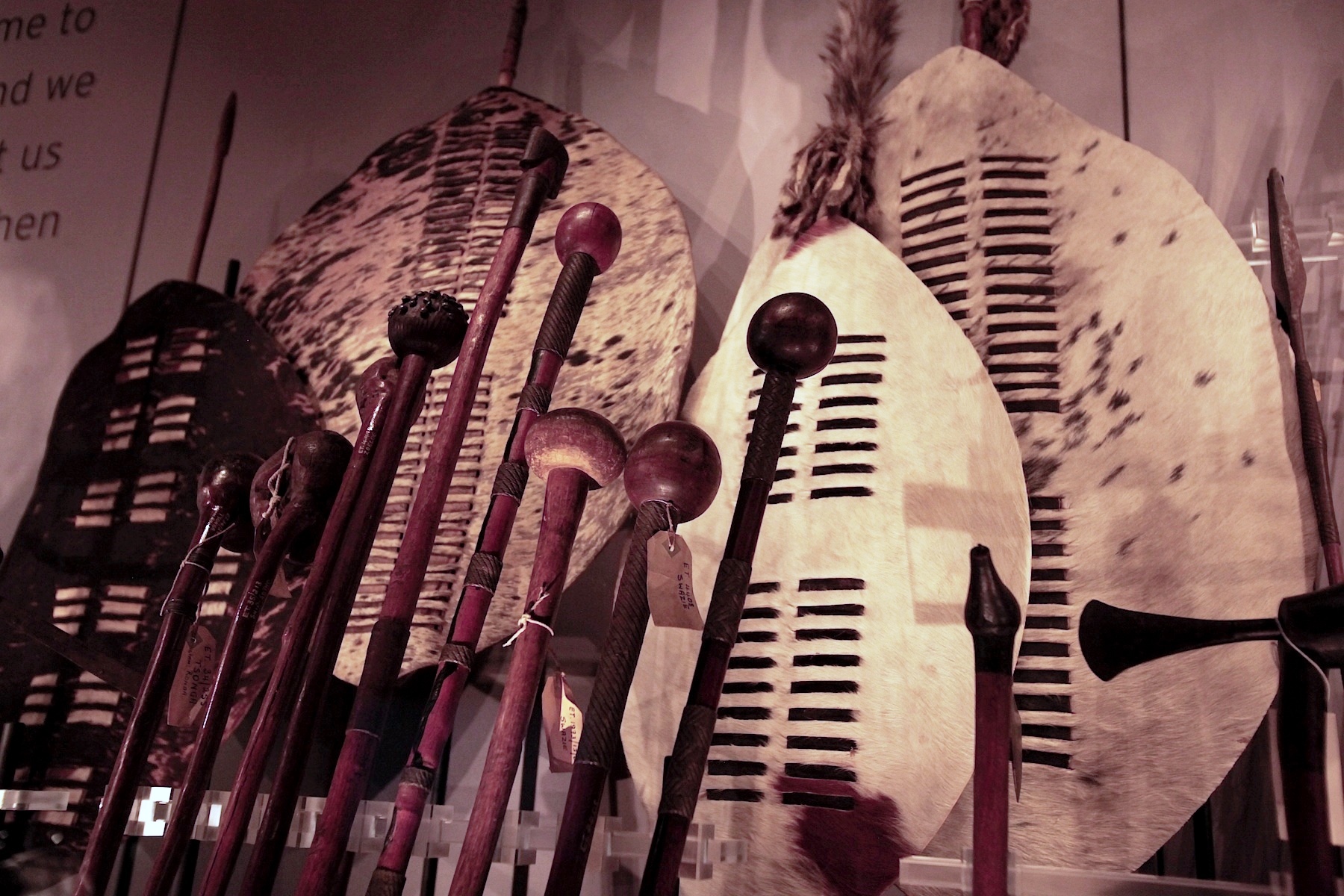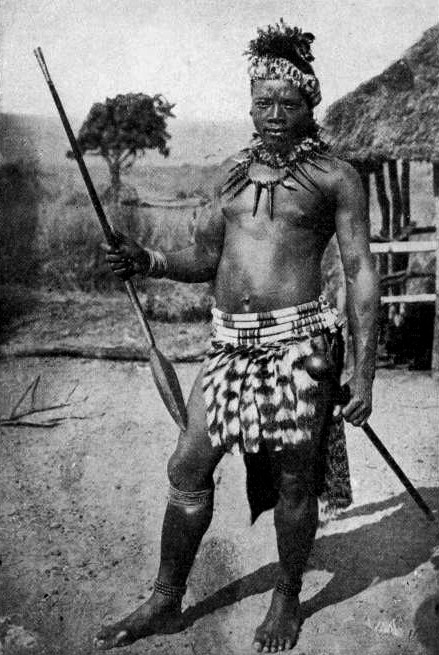|
Bhambatha Rebellion
The Bambatha Rebellion (or the Zulu Rebellion) of 1906 was led by Bambatha kaMancinza (c. 1860–1906?), leader of the Zondi clan of the Zulu people, who lived in the Mpanza Valley (now a district near Greytown, KwaZulu-Natal) against British colonial rule and taxation in the Colony of Natal exacerbated by various economic crises. It saw around 3,000-4,000 Zulus killed by the British, and popularised the thought among colonisers that the unification of the colonies was necessary to maintain white supremacy. The Union of South Africa was subsequently formed in 1910. Overview In the years following the Anglo-Boer War, British employers in Natal had difficulty recruiting Black farmers because of increased competition from the gold mines of the Witwatersrand. The colonial authorities introduced a poll tax £1 () in addition to the existing hut tax to pressure Zulu men to enter the labour market. The tax was very regressive, and disproportionately affected poorer households. Th ... [...More Info...] [...Related Items...] OR: [Wikipedia] [Google] [Baidu] |
Anglo-Zulu War
The Anglo-Zulu War was fought in present-day South Africa from January to early July 1879 between forces of the British Empire and the Zulu Kingdom. Two famous battles of the war were the Zulu victory at Battle of Isandlwana, Isandlwana and the British defence at Battle of Rorke's Drift, Rorke's Drift. Following the passing of the British North America Act 1867 forming a federation in Canada, Henry Herbert, 4th Earl of Carnarvon, Lord Carnarvon thought that a similar political effort, coupled with military campaigns, might lead to a ruling white minority over a black majority in South Africa. This would yield a large pool of cheap labour for the British sugar plantations and mines, and was intended to bring the African Kingdoms, tribal areas, and Boer republics into South Africa. In 1874, Sir Henry Bartle Frere, Bartle Frere was appointed as British High Commissioner for Southern Africa to effect such plans. Among the obstacles were the armed independent states of the South ... [...More Info...] [...Related Items...] OR: [Wikipedia] [Google] [Baidu] |
Tax Per Head
A poll tax, also known as head tax or capitation, is a lump-sum tax, tax levied as a fixed sum on every liable individual (typically every adult), without reference to income or resources. ''Poll'' is an archaic term for "head" or "top of the head". The sense of "counting heads" is found in phrases like polling place and opinion poll. Head taxes were important sources of revenue for many governments from ancient times until the 19th century. In the United Kingdom, poll taxes were levied by the governments of John of Gaunt in the 14th century, Charles II of England, Charles II in the 17th and Margaret Thatcher in the 20th century. In the United States, voting poll taxes (whose payment was a precondition to voting in an election) have been used to Disenfranchisement after the Reconstruction Era, disenfranchise impoverished and minority voters (especially after Reconstruction Era, Reconstruction). Poll taxes are Regressive tax, regressive, meaning the higher someone's income is, t ... [...More Info...] [...Related Items...] OR: [Wikipedia] [Google] [Baidu] |
Thukela
The Tugela River (; ) is the largest river in KwaZulu-Natal Province, South Africa. With a total length of , and a drop of 1370 metres in the lower 480 km, it is one of the most important rivers of the country. The river originates in Mont-aux-Sources of the Drakensberg Mountains at an elevation of 3282 metres This has a very detailed description of the river's course. and plunges in five distinct free-leaping falls 947 metres down the Tugela Falls. The Mont-aux-Sources is also the origin of tributaries of two other major South African rivers, the Orange and the Caledon River. From the Drakensberg range, the Tugela follows a route through the KwaZulu-Natal midlands before flowing into the Indian Ocean. The total catchment area is approximately . Land uses in the catchment are mainly rural subsistence farming and commercial forestry. Tributaries The Tugela is fed by a number of tributaries coming off the Drakensberg, the largest being the Mzinyathi ("Buffalo") River (ri ... [...More Info...] [...Related Items...] OR: [Wikipedia] [Google] [Baidu] |
Chief Meseni
Chief may refer to: Title or rank Military and law enforcement * Chief master sergeant, the ninth, and highest, enlisted rank in the U.S. Air Force and U.S. Space Force * Chief of police, the head of a police department * Chief of the boat, the senior enlisted sailor on a U.S. Navy submarine * Chief petty officer, a non-commissioned officer or equivalent in many navies * Chief warrant officer, a military rank Other titles * Chief ''x'' officer, a corporate title in the c-suite * Chief of the Name, head of a family or clan in Ireland and Scotland * Chief engineer, the most senior licensed mariner of an engine department on a ship, typically a merchant ship * Chief mate, or Chief officer, the highest senior officer in the deck department on a merchant vessel * Chief of staff, the leader of a complex organization * Fire chief, top rank in a fire department * Scottish clan chief, the head of a Scottish clan * Tribal chief, a leader of a tribal form of government * Chief, ... [...More Info...] [...Related Items...] OR: [Wikipedia] [Google] [Baidu] |
Shield
A shield is a piece of personal armour held in the hand, which may or may not be strapped to the wrist or forearm. Shields are used to intercept specific attacks, whether from close-ranged weaponry like spears or long ranged projectiles such as arrows. They function as means of active blocks, as well as to provide passive protection by closing one or more lines of engagement during combat. Shields vary greatly in size and shape, ranging from large panels that protect the user's whole body to small models (such as the buckler) that were intended for hand-to-hand-combat use. Shields also vary a great deal in thickness; whereas some shields were made of relatively deep, absorbent, wooden planking to protect soldiers from the impact of spears and crossbow bolts, others were thinner and lighter and designed mainly for deflecting blade strikes (like the roromaraugi or qauata). Finally, shields vary greatly in shape, ranging in roundness to angularity, proportional length and wi ... [...More Info...] [...Related Items...] OR: [Wikipedia] [Google] [Baidu] |
Cowhide
Cowhide is the natural, unbleached skin and hair of a cow. It retains the original coloring of the animal. Cowhides are a product of the food industry from cattle. Cowhide is frequently processed into leather. Process Once a cow has been killed, the skin is removed. It is then selected in the raw state, at the very first moment when it is salted. It is organized by size and color. In the Tanning (leather), tannery, a traditional hair on hide tanning method is employed to ensure that the hide is soft, and less susceptible to odour and moulting. It ensures that the cowhide will last longer. It is then naturally dried and the best hides are separated from the rest, with the ones that cannot be used in full as decorative items separated to be used as patchwork Carpet, rugs. These are usually those with damage (for example cuts and other injuries to the skin during the life of the animal) that causes the skin to tear post drying. Use Cowhide can be dyeing, dyed to resemble skins such ... [...More Info...] [...Related Items...] OR: [Wikipedia] [Google] [Baidu] |
Knobkerrie
A knobkerrie, also spelled knobkerry, knobkierie, and knopkierie (Afrikaans), is a form of wooden club, used mainly in Southern Africa and Eastern Africa. Typically they have a large knob at one end and can be used for clubbing an enemy's head. For the various peoples who use them, they often have marked cultural significance. Being able to carry the knobkerrie has also had a political dimension, especially in South Africa. Name The name derives from the Afrikaans word ''knop'', meaning ''knob'' or ''ball'' and the Khoekhoe or San word ''kirri'', meaning walking stick. The name has been extended to similar weapons used by the native peoples of Australia, the Pacific islands, and other places, and was also used in the British army. Uses in southern Africa and abroad Knobkerries were an indispensable weapon of war both in Africa and abroad. In Africa, the weapon found particular use among Nguni peoples. Among the Zulu people they are known as ''iwisa.'' The iwisa was not typ ... [...More Info...] [...Related Items...] OR: [Wikipedia] [Google] [Baidu] |
Assegai
An assegai or assagai is a polearm used for throwing, usually a light spear or javelin made up of a wooden handle with an iron tip. Area of use The use of various types of the assegai was widespread all over Africa and it was the most common weapon used before the introduction of firearms. The Zulu, Xhosa, and other Nguni tribes of South Africa were renowned for their use of the assegai. ''Iklwa'' Shaka of the Zulu popularized the use of the shorter stabbing spear with a shaft and a larger, broader blade long in warfare, which was traditionally used primarily as a hunting spear. This weapon is otherwise known as the ''iklwa'' or ''ixwa'', after the sound that was heard as it was withdrawn from the victim's wound. The traditional spear was not abandoned, but was thrown from range at enemy formations before closing in for close quarters battle with the iklwa. This tactical combination originated during Shaka's military reforms. This weapon was typically used with one hand ... [...More Info...] [...Related Items...] OR: [Wikipedia] [Google] [Baidu] |
Guerrilla Warfare
Guerrilla warfare is a form of unconventional warfare in which small groups of irregular military, such as rebels, partisans, paramilitary personnel or armed civilians, which may include recruited children, use ambushes, sabotage, terrorism, raids, petty warfare or hit-and-run tactics in a rebellion, in a violent conflict, in a war or in a civil war to fight against regular military, police or rival insurgent forces. Although the term "guerrilla warfare" was coined in the context of the Peninsular War in the 19th century, the tactical methods of guerrilla warfare have long been in use. In the 6th century BC, Sun Tzu proposed the use of guerrilla-style tactics in '' The Art of War''. The 3rd century BC Roman general Quintus Fabius Maximus Verrucosus is also credited with inventing many of the tactics of guerrilla warfare through what is today called the Fabian strategy, and in China Peng Yue is also often regarded as the inventor of guerrilla warfare. Guerrilla wa ... [...More Info...] [...Related Items...] OR: [Wikipedia] [Google] [Baidu] |
Martial Law
Martial law is the replacement of civilian government by military rule and the suspension of civilian legal processes for military powers. Martial law can continue for a specified amount of time, or indefinitely, and standard civil liberties may be suspended for as long as martial law continues. Most often, martial law is declared in times of war or emergencies such as civil unrest and natural disasters. Alternatively, martial law may be declared in instances of Coup d'état, military coups d'état. Overview Despite the fact that it has been declared frequently throughout history, martial law is still often described as largely elusive as a legal entity. References to martial law date back to 1628 England, when Matthew Hale (jurist), Sir Matthew Hale described martial law as, "no Law, but something indulged rather than allowed as a Law." Despite being centuries old, this quote remains true in many countries around the world today. Most often, the implementation of martial l ... [...More Info...] [...Related Items...] OR: [Wikipedia] [Google] [Baidu] |






